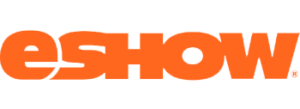Boosting registration numbers is a critical goal for any event organizer, as it directly impacts attendee engagement, sponsorship value, and overall event success. eShow’s Registration Management System offers a comprehensive suite of tools designed to simplify the registration process and encourage more attendees to sign up for events. This blog post explores proven strategies to increase registration counts, supported by best practices and success stories using eShow’s platform.
The Importance of Effective Registration Management
Effective registration management is vital to the success of any event. It serves as the first touchpoint with attendees and can significantly impact their perception of the event. A streamlined registration process leads to higher conversion rates, better attendee data accuracy, and improved overall experience.
Benefits of Increasing Registration Count
- Higher Revenue: More registrations translate to increased ticket sales, sponsorship revenue, and ancillary income (e.g., merchandise or special sessions).
- Enhanced Engagement: A larger pool of attendees can lead to more dynamic interactions, richer networking opportunities, and higher overall engagement.
- Improved Data Insights: A robust registration count provides more data, allowing for better insights into attendee preferences and behavior.
Proven Strategies to Boost Registration Count
1. Simplify the Registration Process
A complicated registration process can deter potential attendees. To maximize registrations, it’s essential to make the process as simple and intuitive as possible.
Example: eShow’s Registration Management System allows event organizers to create user-friendly registration forms with customizable fields, which can be tailored to the specific needs of the event. By minimizing the amount of information required upfront and allowing for easy form navigation, eShow’s platform ensures a frictionless experience that encourages more attendees to complete their registration.
2. Offer Flexible Payment Options
Flexibility in payment options can reduce barriers to registration. Offering multiple payment methods and tiered pricing, can cater to different attendee preferences and increase conversion rates.
Example: eShow’s Registration Management System offers secure financial transactions, ensuring a seamless transaction experience for attendees. Payment flexibility allows attendees to choose their preferred payment method and pricing, making it easier for them to commit to the event.
3. Integrate Housing and Travel Management
Simplifying logistics is a significant factor in encouraging registrations. By integrating housing management directly into your registration form, you offer a one-stop-shop solution that makes it easy for attendees, exhibitors, and speakers to secure accommodations. This integration streamlines the process, providing attendees with a seamless experience from registration to travel planning.
Example: eShow’s platform allows event organizers to manage individual and group reservations directly within the registration form. It includes features such as single-source confirmations, waitlisting, and attrition management workflows, making it easier to monitor room blocks, track attrition levels, and maintain quality control. Additionally, eShow supports the creation and submission of Requests for Proposals (RFPs) to hotels, facilitating negotiations on rates and concessions. This all-in-one solution ensures attendees have everything they need in one place, reducing friction and encouraging more to register.
4. Utilize Registration Paths Based on Attendee Type
Creating customized registration paths based on attendee type (e.g., speakers, exhibitors, general attendees) can simplify the process for each group, ensuring they provide only the necessary information relevant to their role.
Example: eShow’s Registration Management System allows event organizers to set up different workflows for various attendee types, enhancing the user experience and ensuring a smooth registration process.
5. Enhance Customer Support with Data Entry and Call Center Services
Providing exceptional customer support is crucial for increasing registration counts. A dedicated data entry and call center team can help address attendee concerns promptly, ensuring a smooth registration process and enhancing overall satisfaction.
Example: eShow offers high-level customer service through its data entry and call center teams, staffed with troubleshooting agents who are experts in eShow products and event management. These agents are equipped to handle attendee inquiries, resolve issues, and provide real-time support. Additionally, eShow’s data entry services manage reconciliations, process refunds, handle substitutions and cancellations, and correct incomplete forms, ensuring that every registration is processed accurately and efficiently. This comprehensive support system reduces friction during the registration process, encouraging more attendees to complete their registration.
6. Monitor and Analyze Registration Data in Real-Time
Regularly monitoring registration metrics and analyzing trends can help identify what’s working and where improvements are needed. Adjusting strategies based on data insights can lead to more effective registration campaigns.
Example: eShow’s Registration Management tool provides detailed analytics on various aspects of the event, including session attendance, speaker performance, and attendee engagement. Planners can access real-time data during the event to identify trends and address issues promptly. Post-event, these analytics offer valuable insights into what worked well and what could be improved, such as generating reports on which sessions had the highest attendance and engagement. This allows planners to optimize future session planning and make data-driven decisions that enhance the overall quality and impact of their events.
Success Stories Using eShow’s Registration Management System
eShow has helped numerous organizations boost their registration counts through its comprehensive and user-friendly Registration Management System. Clients are able to increase early registrations by utilizing eShow’s customizable registration forms, mobile-friendly app, and self-service registration kiosks. Additionally, organizations can improve their onsite registration process, by reducing check-in times thanks to eShow’s remote kiosks and dedicated onsite support staff.
Maximize Registration with eShow’s Comprehensive Solutions
Increasing registration count is vital to the success of any event. By adopting these best practices and leveraging the capabilities of eShow’s Registration Management System, event organizers can create a streamlined, user-friendly registration process that encourages more attendees to sign up. From simplifying the registration process to utilizing multi-channel marketing and optimizing for mobile, eShow provides the tools needed to drive higher registration numbers and ensure a successful event.
Find out how eShow’s Registration Management System can help you increase your event registration count.
